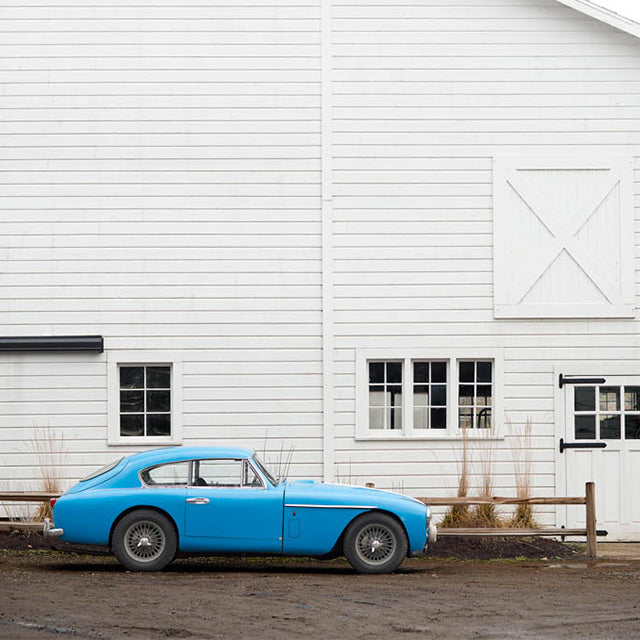The first thing you may notice is the shockingly inappropriate color (French Blue) and second, the well-used condition the car is in. I affectionately call its presentation “perfectly awful”. Before the Concours Bores and Body Gap Police pounce, let me state right up front: I love it as it is and I intend to keep it just the way it is…please go away.
It is interesting to note the number of Aston Martin beginnings and endings seen in DP 193.
For starters, this is the beginning of the end of production of road cars at the historic Tickford factory. The MK III also represents the last evolution of Claude Hill’s remarkable Atom chassis, is arguably stylist Frank Feeley’s most graceful version of his revolutionary hatchback GT body design, and the 3 liter DBA engine is the last version of the brilliant twin overhead cam engine WO Bentley designed for Lagonda in the late 40s.
For the MK III, Bentley’s twin cam was re-engineered by Aston’s equally brilliant (new) chief engineer, Tadek Marek. I believe DP 193 is also the first Aston road car with disc brakes, on all four corners no less. And finally, it is the very first Aston road car to wear what has become a trademark grill design.



I am particularly interested in Aston Martin’s mid-century cars, those produced during David Brown’s stewardship of the company. My interest ends with the introduction of the V8 cars. Over the years, I have had the luxury of owning and restoring many DB Astons. Starting, in chronological order, 1954 DB 2/4, 56 2/4 MK II DHC, 3 Mk IIIs, half a dozen DB4s, a few DB5s, and DB6s. I can say from experience: they are all truly brilliant in their own ways.
However, for my tastes, the MK III is the best of the bunch. I see the MK III as the last of the purebred, dyed-in-the-wool Astons, and the ultimate development of the “enthusiast driver” theme developed by Aston’s patriarchs Richard Bamford and Lionel Martin a century ago. For all their new world supercar brilliance and Jet-Set glamor, the DNA of the Italian Superleggera-inspired Astons (DB4, 5, and 6) has been altered and they lack the “Old English” charm of their predecessors.
Much of the joy I find in old cars is the vicarious connection they give us with history. However, it’s often hard to sort historical facts from fiction. In the case of historical artifacts, sorting reality from deceitful rumors a dealer may imply to sell an object can take years of research to confirm or deny. So it has been with DP 193. I have made many significant discoveries over the years regarding the car’s provenance, including aRoad & Track “feature car” spread May 1957, and confirmation that the car competed in the 1958 Monte Carlo rally, plus a few period hill climb events!
However, a few mysteries remain, and perhaps a few new discoveries remain to be revealed. Until then, I think I’ll go for a drive.

























































